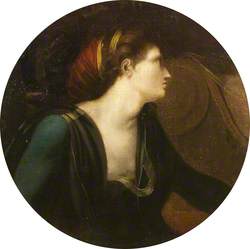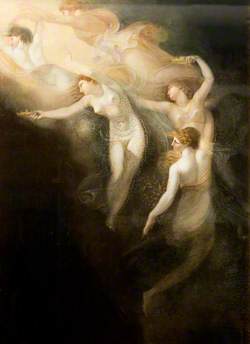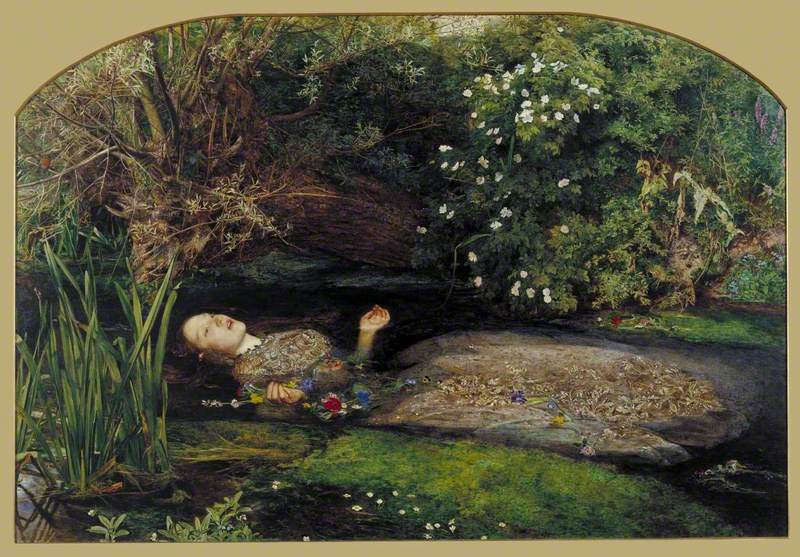How you can use this image
This image is available to be shared and re-used under the terms of the Creative Commons Attribution-NonCommercial-NoDerivatives licence (CC BY-NC-ND).
You can reproduce this image for non-commercial purposes and you are not able to change or modify it in any way.
Wherever you reproduce the image you must attribute the original creators (acknowledge the original artist(s) and the person/organisation that took the photograph of the work) and any other rights holders.
Review our guidance pages which explain how you can reuse images, how to credit an image and how to find more images in the public domain or with a Creative Commons licence available.
DownloadNotes
Add or edit a note on this artwork that only you can see. You can find notes again by going to the ‘Notes’ section of your account.
Fuseli was introduced to Shakespeare's plays during his student days in Zürich with the Swiss scholar Jacob Bodmer. 'A Midsummer Night's Dream' held a special appeal for him, in that it explores the realms of the supernatural. In the picture Fuseli illustrates a moment from Act IV scene 1, in which Oberon, in order to punish her for her pride, casts a spell on Queen Titania, as a result of which she falls in love with Bottom, whose head has been transformed into that of an ass. In the play she murmurs lovingly to the object of her affections, 'Come, sit thee down upon this flowery bed, While I thy amiable cheeks do coy, And stick musk roses in thy sleek smooth head, And kiss thy fair large ears, my gentle joy'. Fuseli's imagination is given free reign in this fantastical scene.
The picture draws on several artistic sources. Fuseli has adapted Titania's seductive pose from Leonardo da Vinci's 'Leda' (c.1506, Galleria Borghese, Rome). The elves plunging into the calyx on the right are inspired by Botticelli's illustration of 'Canto XXX of Dante's Paradiso' (c.1469). And the small girl with a butterfly head on the left derives from a type of child portrait developed by Reynolds, whereby the child's features closely resemble a cat, mouse or other small creature posed with her. Fuseli painted several other scenes from 'A Midsummer Night's Dream', including 'Titania's Awakening' (1785–1790, Kunstmuseum, Winterthur), where the Queen awakes and recounts her 'dream' to Oberon. He was also inspired by other Shakespearean texts and was particularly drawn to the supernatural and irrational elements in such plays as 'The Tempest', 'Hamlet' and 'King Lear'.
Further reading: 'Henry Fuseli 1741–1825', Tate Gallery, London 1975, pp.61–62, reproduced p.62. Jeremy Maas, 'Victorian Fairy Painting', exhibition catalogue, Royal Academy of Arts, London 1997, p.12. Frances Fowle December 2000
Title
Titania and Bottom
Date
c.1790
Medium
Oil on canvas
Measurements
H 217.2 x W 275.6 cm
Accession number
N01228
Acquisition method
Presented by Miss Julia Carrick Moore in accordance with the wishes of her sister 1887
Work type
Painting










